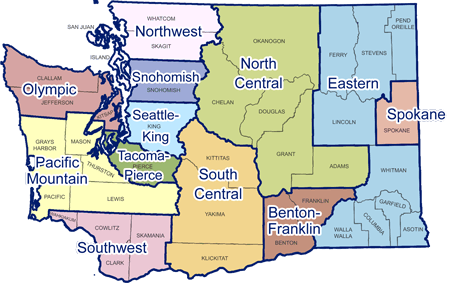What is WIOA?
The Workforce Innovation and Opportunity Act became law in July 2014 with broad bipartisan support. It is the first federal reform of the workforce system in 15 years, replacing and modifying the 1998 Workforce Investment Act (WIA). The goals of WIOA are to improve the quality of the workforce, increase economic self-sufficiency, reduce welfare dependency, and meet employer skill requirements. Most WIOA provisions become effective on July 1, 2015, with additional requirements to be met by July 1, 2016.
What is different about WIOA?
Under WIOA, the TANF program is for the first time a mandatory partner in the one-stop system for delivering local workforce services, unless the Governor chooses to exempt it. At the state level, Washington has the option of submitting to the federal government a “Unified State Plan”, consisting only of the original core workforce programs under WIA, or a “Combined Plan” that could include ESA programs such as TANF and/or the Basic Food Employment and Training (BFET) program. Finally, WIOA stresses the importance of serving clients with barriers to employment, including TANF adults within two years of their 60 month time limit, single parents or pregnant adults, the homeless, clients with limited English proficiency, and adults with disabilities, all of which are populations ESA currently serves.
Why is WIOA important to ESA?
WIOA is important to ESA for all the reasons cited above and because the Governor has ordered the State Workforce Board to “conduct an examination of integrating the TANF program into the workforce system, including recommendations for serving the most at-risk TANF clients.” The Governor has further specified that “health and human services stakeholders” must be part of this process and DSHS is to “participate fully in this analysis.” This is the background for the community stakeholder meetings we are holding in May 2015 to which you have been invited.
The stakeholder process
Whether you participate in any of the stakeholder meetings or comment afterwards through our email box, this website will be the means for us to respond to your questions and comments to the best of our ability. Based on your input we will be drafting a report on TANF integration into WIOA for ESA leadership in June, which will be the basis for recommendations to the State Workforce Board in July. We intend this process to be as inclusive and transparent as possible. If you feel you are experiencing any difficulty in getting your voice heard, please contact Freda Cogger at freda.cogger@dshs.wa.gov.

